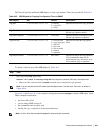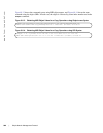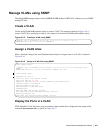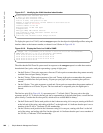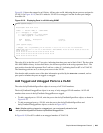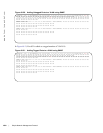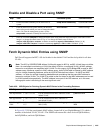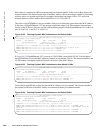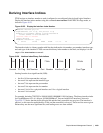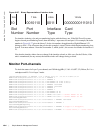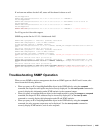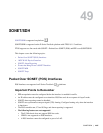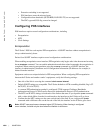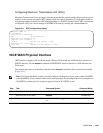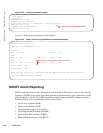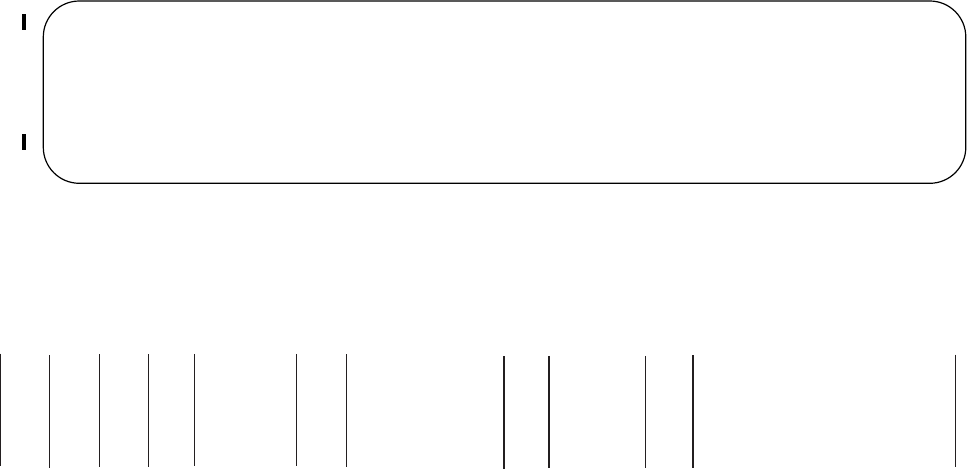
Simple Network Management Protocol | 1003
Deriving Interface Indices
FTOS assigns an interface number to each (configured or unconfigured) physical and logical interface.
Display the interface index number using the command
show interface from EXEC Privilege mode, as
shown in Figure 48-25.
Figure 48-25. Display the Interface Index Number
The interface index is a binary number with bits that indicate the slot number, port number, interface type,
and card type of the interface. FTOS converts this binary index number to decimal, and displays it in the
output of the
show interface command.
Figure 48-26. Interface Index Binary Calculations
Starting from the least significant bit (LSB):
• the first 14 bits represent the card type
• the next 4 bits represent the interface type
• the next 7 bits represent the port number
• the next 5 bits represent the slot number
• the next 1 bit is 0 for a physical interface and 1 for a logical interface
• the next 1 bit is unused
For example, the index 72925242 is 100010110001100000000111010 in binary. The binary interface index
for GigabitEthernet 1/21 of a 48-port 10/100/1000Base-T line card with RJ-45 interface is shown in
Figure 48-27. Notice that the physical/logical bit and the final, unused bit are not given. The interface is
physical, so this must be represented by a 0 bit, and the unused bit is always 0. These two bits are not given
because they are the most significant bits, and leading zeros are often omitted.
FTOS#show interface gig 1/21
GigabitEthernet 1/21 is up, line protocol is up
Hardware is Force10Eth, address is 00:01:e8:0d:b7:4e
Current address is 00:01:e8:0d:b7:4e
Interface index is 72925242
[output omitted]
FTOS#show linecard all | grep 1
1 online online E48TF E48TF 7.7.1.1 48
Card Type
Interface Type
Port Number
Slot Number
14 bits
4 bits
7 bits
1 bit
Unused
5 bits
1 bit
P/L Flag



